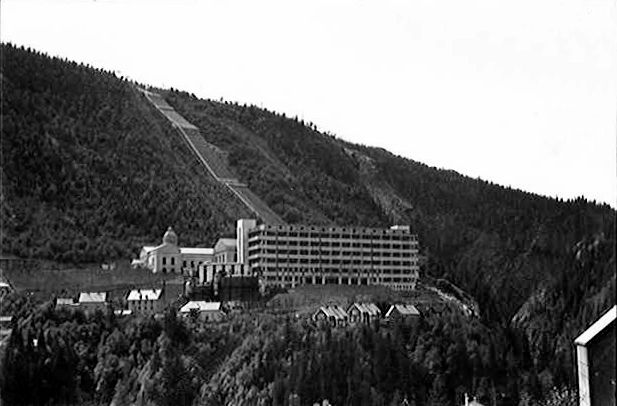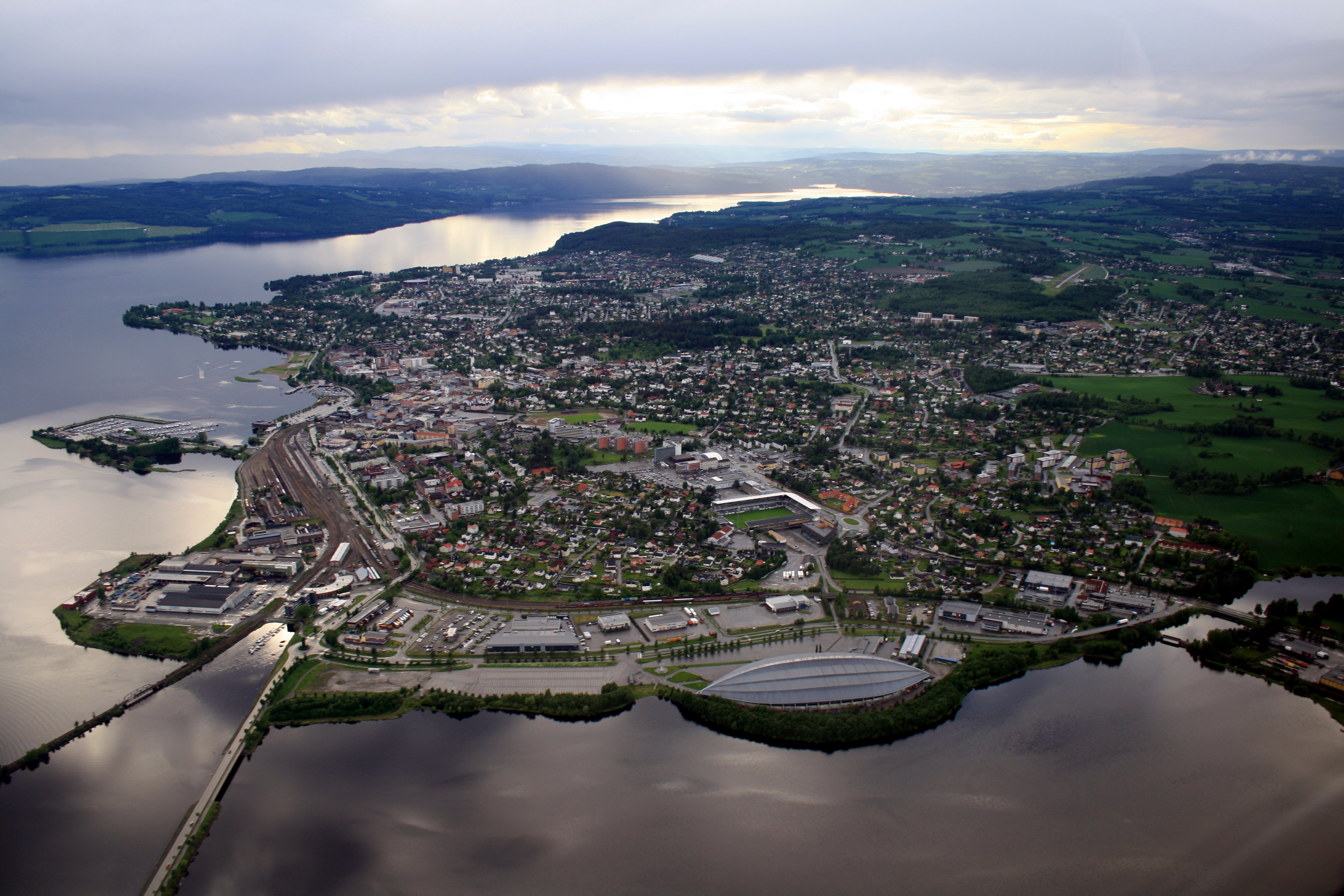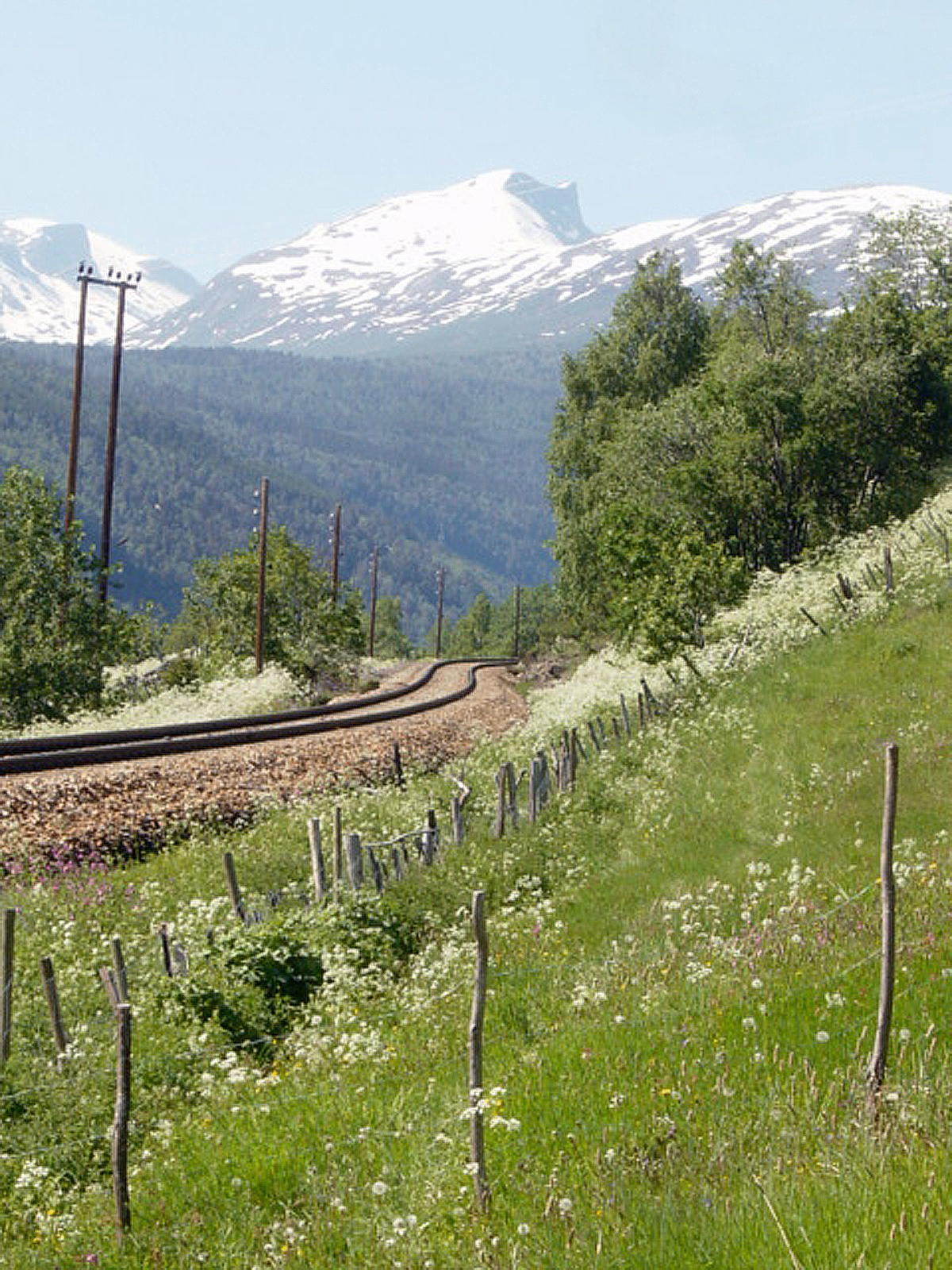|
Stuguflåt Bridge
The Stuguflåt Bridge ( no, Stuguflåtbrua or ) is a stone railway bridge north of Stuguflåten on the Rauma Line over the Rauma River in Innlandet county, Norway. The bridge is long, has a span, and is wide. Work began on the bridge in 1919, and the foundations were laid in autumn 1920, with the walls started by summer 1921. The first rails were laid on 16 September 1921 and were finished on 22 August 1922. The first train crossed in autumn 1922 and materials from this cargo were used to make a permanent snowplough. The Stuguflåt Bridge has been used year round since 1923, and the total cost of the bridge was . In January 1945, Joachim Rønneberg and SOE agents ( Operation Fieldfare) tried to damage the bridge in order to halt the movement by German occupying forces on the Rauma Line. The bridge was reopened three weeks later. [...More Info...] [...Related Items...] OR: [Wikipedia] [Google] [Baidu] |
DRB Class 52
The Deutsche Reichsbahn's Class 52Wartime locomotives classes are prefixed DRB (Deutsche Reichsbahn) to distinguish them from those introduced by the DRG (prefixed DRG), which became defunct in 1937, and those introduced later by the East German Deutsche Reichsbahn (prefixed DR). is a German steam locomotive built in large numbers during the Second World War. It was the most produced type of the so-called ''Kriegslokomotiven'' or ''Kriegsloks'' (war locomotives). The Class 52 was a wartime development of the pre-war DRG Class 50, using fewer parts and less expensive materials to speed production. They were designed by Richard Wagner who was Chief Engineer of the Central Design Office at the Locomotive Standards Bureau of the DRG. About a dozen classes of locomotive were referred to as ''Kriegslokomotiven''; however, the three main classes were the Class 52, 50 and 42. They were numbered 52 1-52 7794. A total of 20 are preserved in Germany. Many locomotives passed into Russian own ... [...More Info...] [...Related Items...] OR: [Wikipedia] [Google] [Baidu] |
Joachim Rønneberg
Joachim Holmboe Rønneberg (30 August 1919 – 21 October 2018) was a Norwegian Army officer and broadcaster. He was known for his resistance work during World War II, most notably commanding Operation Gunnerside, and his post-war war information work. Personal life Rønneberg was born in Ålesund, Møre og Romsdal, as the second son of Alf Rønneberg from Ålesund and Anna Krag Sandberg, and a member of the Rønneberg family. He was the brother of Erling Rønneberg, who was a well-known resistance member too, having received British commando training. On the maternal side he was a nephew of Ole Rømer Aagaard Sandberg, and thus a grandnephew of Ole Rømer Aagaard Sandberg, Sr. On the paternal side he was a second great grandson of Carl Rønneberg, and a grandnephew of politician Anton Johan Rønneberg, whose mother was a part of the Holmboe family—hence Joachim's middle name. During his childhood, he was a member of scout movement. On 19 September 1949, he married ... [...More Info...] [...Related Items...] OR: [Wikipedia] [Google] [Baidu] |
Bridges Completed In 1922
A bridge is a structure built to span a physical obstacle (such as a body of water, valley, road, or rail) without blocking the way underneath. It is constructed for the purpose of providing passage over the obstacle, which is usually something that is otherwise difficult or impossible to cross. There are many different designs of bridges, each serving a particular purpose and applicable to different situations. Designs of bridges vary depending on factors such as the function of the bridge, the nature of the terrain where the bridge is constructed and anchored, and the material used to make it, and the funds available to build it. The earliest bridges were likely made with fallen trees and stepping stones. The Neolithic people built boardwalk bridges across marshland. The Arkadiko Bridge (dating from the 13th century BC, in the Peloponnese) is one of the oldest arch bridges still in existence and use. Etymology The ''Oxford English Dictionary'' traces the origin of the w ... [...More Info...] [...Related Items...] OR: [Wikipedia] [Google] [Baidu] |
Railway Bridges In Innlandet
Rail transport (also known as train transport) is a means of transport that transfers passengers and goods on wheeled vehicles running on rails, which are incorporated in tracks. In contrast to road transport, where the vehicles run on a prepared flat surface, rail vehicles (rolling stock) are directionally guided by the tracks on which they run. Tracks usually consist of steel rails, installed on sleepers (ties) set in ballast, on which the rolling stock, usually fitted with metal wheels, moves. Other variations are also possible, such as "slab track", in which the rails are fastened to a concrete foundation resting on a prepared subsurface. Rolling stock in a rail transport system generally encounters lower frictional resistance than rubber-tyred road vehicles, so passenger and freight cars (carriages and wagons) can be coupled into longer trains. The operation is carried out by a railway company, providing transport between train stations or freight customer facili ... [...More Info...] [...Related Items...] OR: [Wikipedia] [Google] [Baidu] |
List Of Bridges In Norway By Length
This is a list of the bridges in Norway listed by their full length above water or land. Bridges {, class="wikitable sortable" , - bgcolor="#efefef" !align="left", !! align="left", Name !! Length (metres) !! Span (metres) !! Completed !! align="left", County , - , , , Drammen Bridge , , align="right" , 1,892 , , align="right" , 60 , , align="center" , 1975 , , Buskerud , - , , , Nordhordland Bridge , , align="right" , 1,614 , , align="right" , 172 , , align="center" , 1994 , , Hordaland , - , , Hålogaland Bridge , align="right" , 1,533 , align="right" , 1,145 , align="center" , 2018 , Nordland , - , , , Sannesund Bridge , , align="right" , 1,528 , , align="right" , 139 , , align="center" , 1978 , , Østfold , - , , , Mjøsa Bridge , , align="right" , 1,421 , , align="right" , 69 , , align="center" , 1985 , , Hedmark/Oppland , - , , , Hardanger Bridge , , align="right" , 1,380 , , align="right" , 1310 , , a ... [...More Info...] [...Related Items...] OR: [Wikipedia] [Google] [Baidu] |
List Of Bridges In Norway
This is a list of bridges and viaducts in Norway, including those for pedestrians and vehicular traffic. Historical and architectural interest bridges Major road and railway bridges This table presents the structures with spans greater than 200 meters (non-exhaustive list). {{row indexer, {, class="wikitable sortable" , - ! class="unsortable", ! scope=col , ! scope=col , Name ! scope=col , Span ! scope=col , Length ! scope=col width="115" , Type ! scope=col width="115" , Carries''Crosses'' ! scope=col , Opened ! scope=col , Location ! scope=col , County ! class="unsortable", Ref. , - , , , _row_count, , Hardanger Bridge, , {{convert, 1310, m, ft, abbr=on, , {{convert, 1373, m, ft, abbr=on, , {{Sort, S, SuspensionSteel box girder deck, concrete pylons, , {{center, National Road 7 National Road 13'' Hardangerfjord'', , 2013, , Bruravik–Brimnes{{Coord, 60, 28, 43.5, N, 6, 49, 49.8, E, type:landmark, display=inline, name=Hardanger Bridge, , Vestland, , {{cite web , u ... [...More Info...] [...Related Items...] OR: [Wikipedia] [Google] [Baidu] |
Operation Fieldfare
Fieldfare cabin (''Fieldfarehytta'') is a shelter built during the occupation of Norway by Nazi Germany. It is situated in the Tafjordfjella mountains on the northern shore of the Lake Veltdalsvatnet in Sunnmøre, Norway. The cabin was built during the spring of 1944 by the sabotage team of Joachim Rønneberg, Birger Strømsheim (1911-2012) and Olav Aarsæther (1918- 2006) of the Norwegian Independent Company 1 (''Kompani Linge'') as part of Operation Fieldfare in Sunnmøre (''Fieldfare i Tafjordfjellene på Sunnmøre''). The location of the cabin is very remote, as it takes two or three days by foot on rough ground to get there. The team was dropped from Great Britain during World War II. Their assignment was to prepare attacks on German supply lines in valley of Romsdal. Additionally they were to establish a foothold in the mountains close to Dombås, one of the busiest railway-intersections between Oslo and Trondheim. Situated under an overhanging rock to protect it from disco ... [...More Info...] [...Related Items...] OR: [Wikipedia] [Google] [Baidu] |
Special Operations Executive
The Special Operations Executive (SOE) was a secret British World War II organisation. It was officially formed on 22 July 1940 under Minister of Economic Warfare Hugh Dalton, from the amalgamation of three existing secret organisations. Its purpose was to conduct espionage, sabotage and reconnaissance in occupied Europe (and later, also in occupied Southeast Asia) against the Axis powers, and to aid local resistance movements. Few people were aware of SOE's existence. Those who were part of it or liaised with it were sometimes referred to as the " Baker Street Irregulars", after the location of its London headquarters. It was also known as "Churchill's Secret Army" or the "Ministry of Ungentlemanly Warfare". Its various branches, and sometimes the organisation as a whole, were concealed for security purposes behind names such as the "Joint Technical Board" or the "Inter-Service Research Bureau", or fictitious branches of the Air Ministry, Admiralty or War Office. SOE operat ... [...More Info...] [...Related Items...] OR: [Wikipedia] [Google] [Baidu] |
Innlandet
Innlandet is a county in Norway. It was created on 1 January 2020 with the merger of the old counties of Oppland and Hedmark (the municipalities of Jevnaker and Lunner were transferred to the neighboring county of Viken on the same date). The new county has an area of , making it the second largest county in Norway after Troms og Finnmark county. The county name translates to "The Inland" which reflects that the county is the only landlocked county in Norway. The county covers approximately 17% of the total area of the mainland area of Norway. It stretches from the Viken county and the Oslo region in the south to Trøndelag county in the north. In the northwest, the county borders Møre og Romsdal and the Vestland county in the west. To the east the county borders the Swedish counties of Värmland and Dalarna. The northern and western areas of the county are dominated by the mountainous areas Rondane, Dovrefjell and Jotunheimen. The Galdhøpiggen mountain is located with ... [...More Info...] [...Related Items...] OR: [Wikipedia] [Google] [Baidu] |
Raumabanen
The Rauma Line ( no, Raumabanen) is a long railway between the town of Åndalsnes (in Rauma Municipality in Møre og Romsdal county), and the village of Dombås (in Dovre Municipality in Oppland county), in Norway. Running down the Romsdalen valley, the line opened between 1921 and 1924 as a branch of the Dovre Line, which connects to the cities of Oslo and Trondheim. Originally intended as the first stage to connect Ålesund, and possibly also Molde and Kristiansund, no extensions have ever been realized. The unelectrified line is served four times daily with Norwegian State Railways' Class 93, although in the summer the service only operates from Åndalsnes to Bjorli as a tourist service. CargoLink operates a daily freight train. The line features two horseshoe curves and has a elevation drop. Among the line's features is the Kylling Bridge and views of the mountainous valley. Five stations remain in use: Dombås, Lesja, Lesjaverk, Bjorli and Åndalsnes. There have been laun ... [...More Info...] [...Related Items...] OR: [Wikipedia] [Google] [Baidu] |
Rauma (river)
The Rauma is a river that runs through '' Romsdalen'', a valley in Møre og Romsdal and Innlandet counties in Norway. It runs for from '' Lesjaskogsvatnet'', a lake in the municipality of Lesja, to the town of Åndalsnes in the municipality of Rauma. The river was once famous for its salmon-fishing, but since an infection with '' Gyrodactylus salaris'' only 5 to 10% of the original stock survives. This, however, has begun to recover rapidly after a successful revitalisation project. The salmon runs up to the '' Slettafossen'', a high combination of waterfalls and rapids more than upriver from the estuary. The Rauma River and its valley are regarded as one of the most beautiful in Norway. The river runs very clear with a green tint and the mountains tower some above the river in the lower and middle parts of the valley. The Reinheimen National Park and the Trollveggen cliff are both located along the southwestern shores of the river through the municipality of Rauma. The ... [...More Info...] [...Related Items...] OR: [Wikipedia] [Google] [Baidu] |
Rauma Line
The Rauma Line ( no, Raumabanen) is a long railway between the town of Åndalsnes (in Rauma Municipality in Møre og Romsdal county), and the village of Dombås (in Dovre Municipality in Oppland county), in Norway. Running down the Romsdalen valley, the line opened between 1921 and 1924 as a branch of the Dovre Line, which connects to the cities of Oslo and Trondheim. Originally intended as the first stage to connect Ålesund, and possibly also Molde and Kristiansund, no extensions have ever been realized. The unelectrified line is served four times daily with Norwegian State Railways' Class 93, although in the summer the service only operates from Åndalsnes to Bjorli as a tourist service. CargoLink operates a daily freight train. The line features two horseshoe curves and has a elevation drop. Among the line's features is the Kylling Bridge and views of the mountainous valley. Five stations remain in use: Dombås, Lesja, Lesjaverk, Bjorli and Åndalsnes. Th ... [...More Info...] [...Related Items...] OR: [Wikipedia] [Google] [Baidu] |




